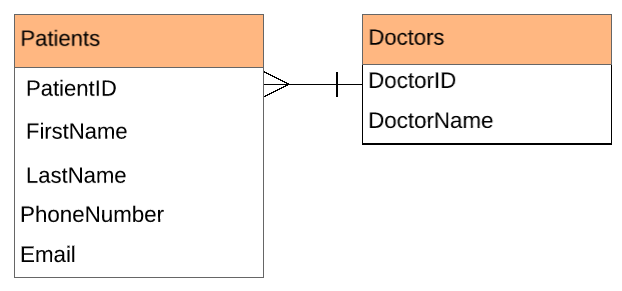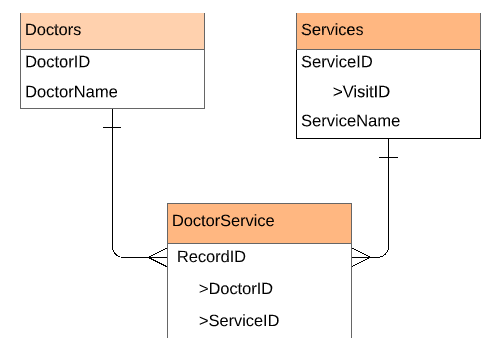In this digital era, many organizations are becoming more and more dependent on (big) data. It’s not surprising since this increasing amount of information helps businesses manage their processes better and more accurately, improving marketing and sales strategies, and drive better business decisions.
Many software tools are emerging so these companies can manage all the data they are gathering. Advanced CRM software is rising in demand due to the urge to stay ahead of the competition, as well as the demand for data specialists that know the best ways to make use of those tools. This is especially true when it comes to designing and building data models.
According to Intricity 101, a data model is “the framework of what the relationships are within a database”. It’s the structure of your data warehouse that tells you how to organize and store all your data for later use. It helps to make sense of all the stored information and it’s designed to be efficient and reliable, reducing complexities and allowing for better data usability and managing.

Customer Data Management. Source: MyCustomer
Building a data model is a long process. This is especially true when designing one specific for your business needs, and considering which way you want to build your own and have your goals set up is crucial to ease up the process.
Your data model should be based on your customers
In business, your customers are the people in charge of your destiny. They are the backbone of your company. Therefore, they should also be the backbone of your database.
It’s not just customer service and retail departments that need customer data. Every team member of your organization uses it: Marketing and sales focus their strategies based on your clients’ wants and needs. Finance manages all the money that enters your company through your customers’ pockets.

Customers at the center of business. Source: Raconteur
You can build all your business data around your customers. The products you sell or the services you provide, everything you do in your company has some relationships with your customers in some way or another. Data models are built to establish relationships between your data that are easy to track, so putting your customers in the center is the way to go.
Here’s what you need to get started
The basics
First, you need to understand the process of building a data model.
There are mainly three levels of data modeling:
- A conceptual data model tells WHAT the system contains. This is meant to organize and define business concepts and rules. It is the most abstract level and it is often used for communicating ideas and data projects.
- A logical data model tells HOW the system should be implemented regardless of the physical implementation of the database management system (DBMS) involved in storing the data. It is meant to develop a technical map of rules and data structures with all the relationships between the entities within the database.
- A physical data model tells HOW the system will be implemented according to a specific DBMS system. Its purpose is the actual implementation of the database.
Data models describe entities and their relationships. Depending on your business you would have different entities. Products, customers, vendors are examples of entities. A hospital could have a “Visits” entity for every time a patient visits the hospital, for example.
Every entity has attributes, which are the details you want to track about your entities. The “Visits” entity could have both “Date” and “Time” attributes as you can see in the following example:

Entities and their attributes.
Entities are related to each other. That’s what we call “Relationships” in a data model. They can be one-to-one, one-to-many, or many-to-many.
The relationship between patients and doctors is an example of one-to-many relationships. A doctor can treat multiple patients, or if you look at it the other way, multiple patients can be treated by a single doctor. This is the most common type of relationship.

One-to-many relationship.
An example of a one-to-one relationship would be services and visits. One visit can have multiple services, but each service is always tied to a single visit.

One-to-one relationship.
A many-to-many relationship happens when multiple instances of an entity can be related to multiple instances of another entity. Take doctors and services: One doctor can provide multiple services and one service can be provided by multiple doctors. You may use a third table named DoctorService to link the Services and Doctors entities.

Many-to-many relationship.
Data Integrity
In order to be able to trust the data you store, you need to create rules that enforce data integrity:
- The entity integrity rule is there to make sure every single entity is reliable. To do so, we assign a primary key to each entity. A primary key is a unique identifier for each record (like a Client or Doctor ID number) that prevents data duplication and helps to keep it accurate. For example, a patient named Susan Bowers could change her name to Susan Johnson, so the primary key should help identify her as the same patient even if her last name has changed. When implementing the entity integrity rule make sure that:
- Every entity has a primary key.
- Every primary key is unique.
- None of your primary keys are null.
- The referential integrity rule makes sure the relationships of your entities are reliable. In order to do so, we make use of foreign keys. A foreign key is the primary key of one table that you reference it in another table. Any foreign key in a table must match the primary key value in the referenced table.

Referential Integrity
So now that you are more familiar with the process of building a data model and that the best way to do so is to focus on your customers, it’s time to get into work. Baby steps are good if they’re in the right direction, so don’t be scared to start slow and steady.
If you’re still unsure of where to start, our amazing team at Empirical can help you get through it! Book a time with us, we’re here to help!
Want a PDF version of this blog post? Click here to download it.
References
- Bradlow, E. & Korst, J. (2019, March 27). Here are 6 ways to build a customer-centric and data-driven culture. Retrieved from https://marketingland.com/here-are-6-ways-to-build-a-customer-centric-and-data-driven-culture-258916
- Hargreaves, C. (2019, February 14). 6 Steps to Building a Powerful Customer Analytics System. Retrieved from https://www.datascience.com/blog/customer-analytics-system
- Ambler, S. (2019). Data Modeling 101. Retrieved from http://www.agiledata.org/essays/dataModeling101.html
- Ismail, N. (2017, August 9). How to create customer-centric data platforms. Retrieved from https://www.information-age.com/creating-customer-centric-data-platforms-123467779/
- Kemper, H. G. & Lee, P. L. (2003). The Customer-Centric Data Warehouse -- an Architectural Approach to Meet the Challenges of Customer Orientation [PDF file]. Retrieved from https://www.researchgate.net/publication/261302233_The_Customer-Centric_Data_Warehouse_An_Architectural_Approach_to_Meet_the_Challenges_of_Customer_Orientation
- Forbes Insights. (2015). Data Driven and Customer Centric: Marketers Turning Insights Into Impact [PDF file]. Retrieved from https://images.forbes.com/forbesinsights/StudyPDFs/Turn-DataDrivenCustomerCentric-REPORT.pdf
- Ross, D. (2007, April 3). Building a Customer-Centric Data Warehouse. Retrieved from https://searchdatamanagement.techtarget.com/news/2240111351/Building-a-Customer-Centric-Data-Warehouse
- [Claris]. (2017, August 12). Data Model - Designing your data model. Retrieved from https://www.youtube.com/watch?v=y2DD8tAjM0E

